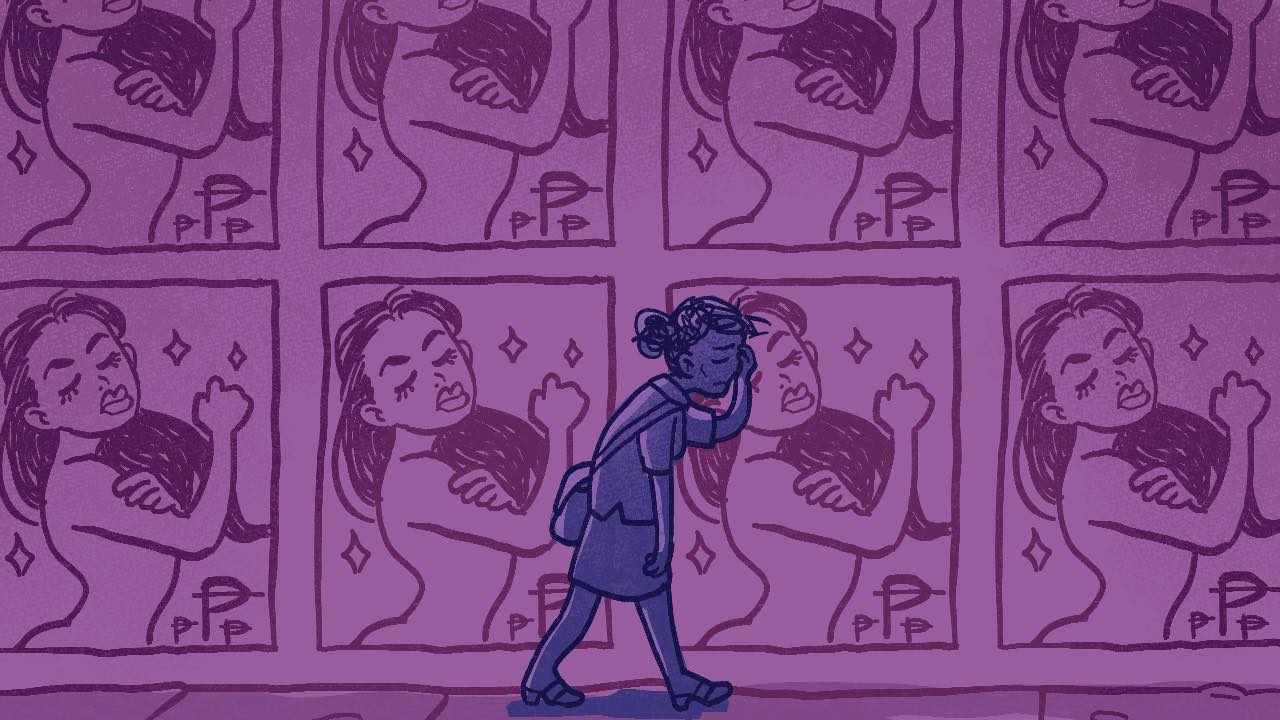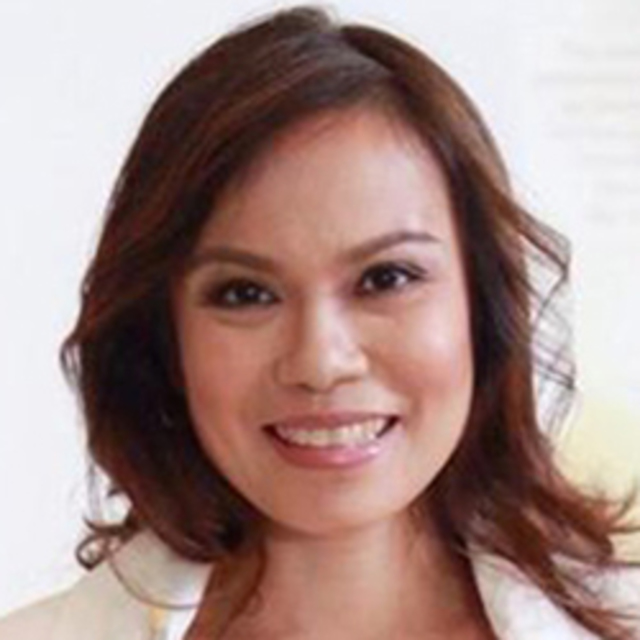

When Dove, via Instagram, invited fashion designer Mich Dulce to be part of a new shampoo campaign to empower women with “the confidence to go for their own definition of beauty,” she became incensed.
Dulce was invited to support the campaign song with her own creative “playful, adventurous, and real” musical interpretation. A toolkit and suggested hashtags to go along with her post were included in the message.
Dulce responded with a note to say that if Dove truly wanted to empower women they should start by paying them for marketing the brand instead of perpetuating unpaid work in the guise of empowerment.
In a Facebook post that has since gone viral, Dulce shared the message exchange with the brand’s public relations (PR) agency and wrote:
“Naghihirap na ang mundo (the world is suffering), yet large corporate global brands like Dove will continue to capitalize on causes like 'women empowerment' for free marketing. Sorry, I've hit my tolerance point with this. I know so many people who got paid with soap in exchange for Dove campaigns which ordinarily would pay models thousands of pesos...”
The PR agency who approached Dulce apologized and said that they were planning to pay for the posts and would send in an agreement outlining those terms.
By then, Dulce’s Facebook post had already gone viral as other women shared similar stories.
Another woman who had received the same invitation as Dulce tried negotiating for compensation but was offered a modest token that was rationalized as “not a talent fee but more of a token of thanks for supporting women.” Another shared how she did an ad for the brand a few years back. The ad which featured her image was plastered along major thoroughfares. She was compensated with shampoo. (READ: Fortune 500 feminism)
In an email interview, Unilever released this statement from Ed Sunico, Vice President for Sustainable Business Communications: “Through the years, Dove’s purpose has been to make beauty a positive experience for every woman – making her develop a positive relationship with the way she looks, helping her raise her self-esteem, and realize her full potential. For a new campaign, Dove Philippines reached out to individuals who have the voice and the influence to further the brand’s purpose of helping women break free from conventions and express their own definition of beauty.”
On the subject of equal and fair pay as an integral part of gender equality and empowering women, Sunico answered, “As a brand, we work with different partners and advocates in various ways whether as talent, or social media influencer. We compensate all talents depending on the work they do, based on mutually agreed engagements. We continue to listen to our community and are constantly reviewing our practices as the industry evolves because our partners are important to us.”
Femvertising
Dulce, who is also the lead singer of the feminist punk band The Male Gaze and is co-founder of feminist group Grrrl Gang Manila, brings up the touchy issue of “femvertising”or how brands use feminist ideals like empowerment to sell their products. There are many thought pieces online about femvertising but one of the best is this piece by Andi Zeislar of Bitch Media. Zeislar termed it as “empowertising” and described it as the commodification of feminism.
“The business of marketing and selling to women literally depends on creating and then addressing female insecurity.... There was good reason for industries that sustained themselves on the self-hatred of women to dread the potential reach of feminist movements. Co-opting the language of liberation to sell their products allowed them to have it both ways, celebrating the spirit of the movement while fostering a new set of insecurities ('natural-look' cosmetics, anyone?) and new aspirational archetypes,” wrote Zeislar.
My view is that femvertising or empowertising is where advertising and advocacy meet. This intersection is not necessarily a bad thing – if brands recognize and live up to the responsibility of taking up a social cause.
Think about all your favorite ads over the last couple of years. Media scholars have acknowledged the power of carefully made and well-thought out advertising in 30 seconds or less. These compact films can challenge long held beliefs and usher new perspectives. Take the Budweiser commercial that honored stepdads and blended families. This Bench ad talks about the importance of parents’s acceptance of their LGBT children and this Nido ad series – which is particularly personal to me – shattered the unspoken stigma of non-nuclear families by normalizing them.
There is power in advertising. But when advertising ventures to speak the language of advocacy, it brings together two worlds that were previously separate.
Advertising was once a realm dominated by fantasy and multi-dollar endorsements by A-lister celebrities, promoting a product that made you feel like you could compensate for not being a celebrity, by buying a product that would somehow make you feel like one.
Advertising was also an industry that was built on the objectification of women (think about all the early car and liquor ads) from the era when advertising agencies and campaigns were developed almost exclusively by men.
Advertising capitalizes on creating want and unmet needs and addressing it with a product.
Advocacy is highlighting and addressing the gaps between public policy and citizen’s aspirations. Advocacy is the fight for a cause.
By its very nature, advertising and public relations are for profit. The essence of advocacy is social justice.
Factors like the internet and social media platforms like YouTube and Instagram democratized the advertising space. Ordinary people became influencers and content creators, a shift that drew emphasis to authenticity and representation – advertising and advocacy began sharing words of the same language.
And this is where it can get tricky both in terms of just compensation and the question of the superficial use of a cause like feminism to kick up the bottomline.
Celebrity endorsers can negotiate mutli-million dollar contracts that will spell out in no unclear terms how many times their image will be used, what and where it will be used for and for how long. They are paid primarily for their fame and their stature, not exclusively for their affiliation to a cause.
When a brand that dabbles into social issues contracts an everyday person or an influencer like Dulce, they do it for their backstory, the authenticity of their lived experience adds credence to a brand’s claim of support for a social issue like equality.
Dulce’s work in Grrrl Gang Manila and The Male Gaze are undoubtedly why Dove saw her endorsement as valuable to the brand’s message of female empowerment and self-love. Dulce’s curly locks were a bonus to the shampoo brand’s call for “freedom to express yourself through your hair.”
But as Dulce pointed out, Dove pays models and celebrities upwards of thousands to do the same. Why did it seem like they were avoiding doing the same with her – and as seen from the stories in her thread – with other women?
Norman Agatep, who is a board member of the Philippine Society of Public Relations Society of the Philippines (PRSP) explained that there is no clear industry standard for influencer pricing as of yet because it has not been fully established if influencer marketing is under PR's domain.
“The influencer marketing industry has seen rapid growth but brands have not responded as quickly,” he said.
“Some brands assign influencer marketing to PR agencies thinking that the resulting publicity is earned (a term for an influencer or media outlet writing about/endorsing a brand because of its relevance and newsworthiness). Other brands assign influencer marketing to ad agencies or to digital agencies since influencer content often appears on digital space,” Agatep added.
Emphasizing that he was expressing his own opinion and not speaking for the PR industry, Agatep said, “I believe influencers must be remunerated. Once brands request influencers to do something on the brand's behalf, that is already stepping into paid territory.”
This kind of engagement, said Agatep, would necessitate a discussion on work involved and metrics like number of followers and level of engagement including types of compensation packages – whether exchange deals, cash, or a mix of both. (READ: [PODCAST] Making Space: Achieving equality for women in the workplace)
“I know this feels like compensation is determined on a case-to-case basis. For a huge part, it really is. I have heard a story, for instance, about a micro influencer who was insulted when offered to be paid in cash – it was as if this person was being paid to think a certain way,” Agatep explained.
Beyond the aesthetics of feminism
This highlights another truth that is sidestepped in the overlap of advertising and advocacy. Often, people’s involvement in advocacy work is not driven by money but by their own experience of othering. Supporting a cause they believe in is doing their part in making sure others do not experience the same kind of marginalization – not to sell a product. This crossover requires a discussion, rather than an assumption that an advocate or influencer will participate in a campaign for a token of appreciation.
When brands use feminism and its ideals of equality, it needs to go beyond cherry picking the easy and trendy aspects of it like empowerment. The idea of empowerment may have become mainstream but its core premise of equality remains the same. Equality goes beyond embracing the way we look and the myriad shapes and sizes our bodies come in. (READ: #2030Now: This is how you give women real political and social power)
Brands who use a social cause like gender equality as part of their advertising need to acknowledge that doing so comes with the responsibility of practicing what they trumpet – and includes the subject of equal and just pay. (READ: Feminism beyond the jargon)
Being an ally of gender equality means incorporating equality into everything they do – and that includes equitably paying women and influencers invited to associate themselves with their brand. Accepting our brown skin, our wide noses, and our curly hair is but a small part of feeling empowered. The struggle for gender equality is also an economic one. Globally, women still make less than men and for certain jobs like care, domestic, and agricultural work, women are not paid at all. Brand endorsements shouldn’t be added to the list of jobs that women are not paid for. – Rappler.com
Ana P. Santos writes about sexual health rights, sexuality and gender for Rappler. She is the 2014 Miel Fellow under the Pulitzer Center on Crisis Reporting and a 2018 Senior Atlantic Fellow for Health Equity in Southeast Asia.Follow her on Twitter at @iamAnaSantos and on Facebook at @SexandSensibilities.com